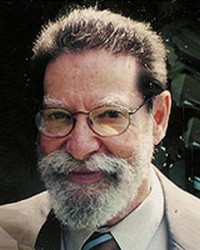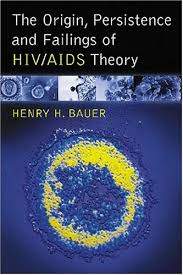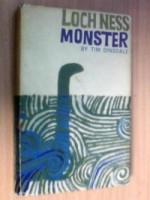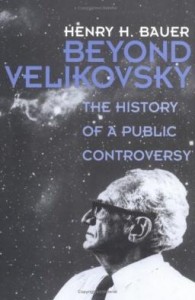“The problem with the scientific method is that it is driven far too much by theory, and not enough by fact. By which I mean that science moves forward by the development, and subsequent testing, of hypotheses, when at times formation of hypotheses should be strenuously avoided because they grow into filters which taint otherwise vital and compelling data.” (Michael A Cremo co-author of Forbidden Archeology )
“How could anyone believe that?” is a natural question whenever someone believes what is contrary to the conventional wisdom.

Since the role of unorthodox views in and out of science has been the focus of Henry Bauer’s academic interests for several decades, he thought about that question in a variety of contexts. His conclusion long ago was that this is the wrong question, the very opposite of the right question, which is, “How does anyone ever come to believe differently than others do?”
It’s a widespread illusion that we believe things simply because they’re true. It’s an illusion that we all tend to harbour about ourselves. “Of course I believe what’s true! My beliefs aren’t wrong! It’s the others who are wrong”.
However, we don’t acquire beliefs because they are true; we acquire them because we are taught that they are true…
For the first dozen years of our lives, that is, before we have begun to learn how to think for ourselves, we almost always believe what parents and teachers tell us. It is usually believed that this has helped our species to survive. But no matter what the reason might be, there is ample evidence this is what happens. There is also evidence to demonstrate a fundamental inertia, for example, in science education that can favour the orthodox and penalize the dissenter. Labels are just one means. As noted before, words are powerful.
That habit of believing our parents and teachers tends to become ingrained. Society’s “experts”, the scientists and doctors, a psychologist would view as surrogate parents and teachers, tend to be believed as a matter of habit. Even advertisers use the image of the man in a lab coat to lend an aura of authority.
So how do some people ever come to believe anything other than what they’ve been taught and question what the experts say?
Bauer was prompted to this train of thought by receiving yet again some comments from people whom he had asked, long ago, to cut through the rhetoric and address the particular issue he questioned: “What is the proof that HIV causes AIDS?”
Whenever he asked this question of well-known commentators, the exchange came to an end. They simply never addressed that central issue.
And it’s not only the camp followers. The same holds true for the actual HIV/AIDS “experts”. Why can’t these people cite the work on which their belief is supposedly based?
Finally Bauer realized: because their belief wasn’t formed that way. They didn’t come to believe because of the evidence.
They came to believe because they wanted to, because a virus-caused AIDS would be in their professional sphere, and they were more than happy to take an imperfect correlation as proof of causation.
The camp followers came to believe simply because they were happy to believe what the experts say and what “everyone else” believes. Who are they to question the authority of scientific experts and scientific institutions?
To question “what everyone knows”, there has to be some decisive incentive or some serendipitous conjunction. He illustrates that by describing how he came to believe some things that “everyone else” believes and some things that “everyone else” does not believe.
The first unorthodox opinion, he describes as his eccentric interest, was that Loch Ness monsters are probably real living animals of some unidentified species. How did he come to that conclusion?
Serendipity set the stage. Reading has been his lifelong pleasure. He used to browse amongst the local library among books that had just been returned and not yet re-shelved, on the basis that these would be the most interesting ones. Try it some time.
Around 1961, he picked from that pile a book titled Loch Ness Monster, by Tim Dinsdale. Like everyone else he had accepted that this was a mythical creature and a tangible tourist attraction invented by those canny Scots. But thumbing the pages, and seeing a set of glossy photos: claimed stills from a film! If these were genuine . . . So he borrowed the book. Having read it, he couldn’t make up his mind. The author seemed genuine, but also very naïve. Yet his film had been developed by Kodak and pronounced genuine. Could it be that ‘Nessies’ are real?
He was unable to find a satisfactory discussion in the scientific literature. So he read whatever other books and articles he could find about it. He also became a member of the Loch Ness Investigation, a group that was exploring at Loch Ness during the summers, and he followed their work via their newsletters — not being able to participate personally since he then lived in Australia.
A dozen years later, on sabbatical leave in England, he took a trip to Loch Ness. More serendipity: there he encountered Dinsdale. Coming to know Dinsdale, coming to trust his integrity, seeing a 35mm copy of his film umpteen times during his talks, brought conviction.
Next, the unorthodox view that HIV doesn’t cause AIDS. How did he come by that belief in something that “everyone else” does not believe?
Having concluded in the early 1970s that ‘Nessies’ were probably real, he became curious why there hadn’t been proper scientific investigations despite the huge upsurge of interest over the previous decades. That led eventually to his change of academic field from chemistry to science studies, with special interest in heterodoxies. In the mid-1990s, he came across the book by Ellison and Duesberg, Why We Will Never Win the War on AIDS. Just as with Dinsdale’s book, he couldn’t make up my mind. The arguments seemed sound, but he didn’t feel competent to judge the technicalities. So, again, he looked for other HIV/AIDS-dissenting books, and wrote reviews of a number of them. Around 2005, that led him to read Harvey Bialy’s scientific autobiography of Peter H. Duesberg. For months thereafter, he periodically reminded himself that he wanted to check a citation Bialy had given, for an assertion that obviously couldn’t be true, namely, that positive HIV-tests in the mid-1980s among teenage potential military recruits from all across the United States had come equally among the girls as among the boys. The consequences of checking that reference are described in The Origin, Persistence and Failings of HIV/AIDS Theory.
As with Nessie, it had taken him more than ten years of looking into the available evidence to become convinced of the correctness of something that “everyone else” does not believe.
Studying chemistry, he didn’t question what the instructors and the textbooks had to say. He surely asked for explanations on some points, and might well have raised quibbles on details, but didn’t question the periodic table or the theory of chemical bonding or the laws of thermodynamics or any other basic tenet.
This was hardly unusual, whatever the wider perception of our universities as a model of the traditional Socratic method of seeking truth, those who go into research in a science don’t begin by questioning the field’s basic tenets. There simply isn’t time. Furthermore, most never have occasion to question those tenets later on. Most scientific research is, in Kuhn’s words, puzzle-solving (Thomas S. Kuhn,The Structure of Scientific Revolutions, University of Chicago Press, 1970).
In every field there are all sorts of little problems to be solved; not little in the sense of easy, but in the sense of not impinging on any basic theoretical issues. One can spend many lifetimes in chemical research without ever questioning the Second Law of thermodynamics, say, or quantum-mechanical calculations of electron energies, and so on and so forth.
So, back to our example of Bauer’s: Immunologists and virologists and pharmacologists and others who came to do research on HIV/AIDS from the mid-1980s onwards have been engaged in trying to solve all sorts of puzzles. They’ve had no reason to question the accepted view that HIV causes AIDS, because their work doesn’t raise that question in any obvious way; they’re working on very specialized, very detailed matters — designing new anti-retroviral drugs, say; or trying to make sense of the infinite variety of “HIV” strains and permutations and re-combinations; or looking for new strategies that might lead to a useful vaccine; and so on and so forth. Many tens of thousands of published articles illustrate that there are no end of mysterious puzzles about “HIV/AIDS” waiting to be solved.
The various people who became activist camp followers, didn’t begin by trying to convince themselves, by looking into the primary evidence, that the mainstream view is correct: they simply believed it, jumped on the very visible bandwagon, and took for granted that the conventional view promulgated by official scientific institutions is true.
It is perfectly natural, in other words, for scientists as well as non-scientists to believe without question that HIV causes AIDS even though they have never seen or looked for the proof.
Mainstream researchers rarely if ever question the basis for the contemporary beliefs in their field. It’s not unique to HIV/AIDS. HIV/AIDS researchers and camp followers never cite the publications that are supposed to prove that HIV causes AIDS for the reason that they never looked for such proof, they simply took it for granted on the say-so of the press-conference announcement and subsequent “mainstream consensus”.
The defence is often made that however highly qualified scientists like Duesberg or Mullis may be, they simply are not equipped to comment because they have never themselves done any research on HIV or AIDS. But that’s precisely why they were able to see that this particular Emperor has no clothes — scientists working directly on the many puzzles generated by this wrong theory have no incentive, no inclination, no reason to question the hypothesis; indeed, the psychological mechanism of cognitive dissonance makes it highly unlikely that scientists with careers vested in HIV/AIDS orthodoxy will be able to recognize the evidence against their belief. This is as close as we get to discussing the power of funding.
More generally, this is the reason why the history of science contains so many cases of breakthroughs being made by outsiders to a particular specialty: coming to it afresh, they are not blinded by the insider dogmas.
So there is nothing unique about this particular example; the fact that the failings of HIV/AIDS theory have been discerned by outsiders and not by insiders, and that the insiders are not even familiar with the supposed proofs underlying their belief. Nor is it unique that the dogma has many camp followers who never bothered to look for the supposed proofs of the mainstream belief. (To be continued)
“First they tell you that you’re wrong, and they can prove it.
Then they tell you you’re right, but it’s not important.
Then they tell you it’s important, but they’ve known it for years.”
(CF Kettering, Time Magazine July 11, 1969, p 54)
Thanks to:
Henry H. Bauer , Professor Emeritus of Chemistry & Science Studies, Dean Emeritus of Arts & Sciences, Virginia Polytechnic Institute & State University
Henry H. Bauer, Beyond Velikovsky: The History of a Public Controversy, University of Illinois Press, 1984; chapter 11, “Motives for believing”.
See also: Human Follies and Fallacies